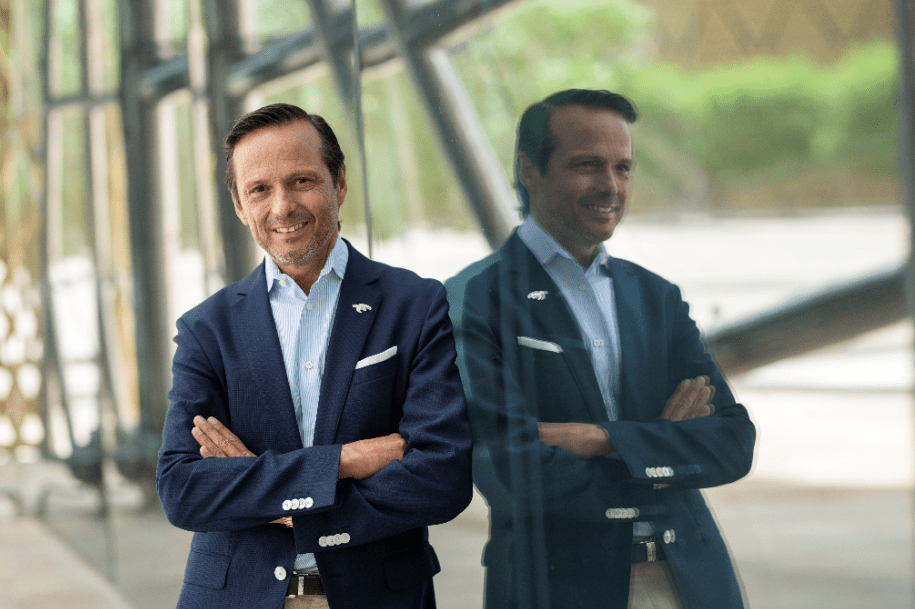JEDDAH: Wednesday’s launch of the dolphin-shaped Coral Bloom luxury island project is only one piece of the rapid development that is going on along Saudi Arabia’s Red Sea coast, with the main builder on this project who is close to finalizing $3.7 billion in investment from nearer banks, and off-plan sales set to start in the second quarter of this year.
In an interview with Arab News, John Pagano, CEO of the Red Sea Development Co. (TRSDC), provided that off-plan sales of housing units will start in the second half, but will be at a restrained capacity of about 300-400 units.
The main units sold in the first phase will be placed in the rental pool for guests, he provided.
TRSDC is totally owned by Saudi Arabia’s Public Investment Fund (PIF) and its main motive is the Red Sea Project, which was informed by Crown Prince Mohammed bin Salman in July 2017.
Work at the project site is nicely under construction and the builder in the previous year said that it had given about $4billion cost of building projects in 2020.
Pagano secured that the first four hotels, and an international airport, will inaugurate towards the end of the coming year.
Twelve more hotels are planned to open before 2023, and on the whole finishing in 2030, the project will contain 50 hotels providing up to 8,000 hotel rooms and 1,300 residential properties aver 22 islands and six inland sites.
The last Wednesday, the crown prince inaugurated the Coral bloom development as a piece of the Red Sea Project.
Planned by the incredibly famous British structural firm Foster + Partners and situated on the venture’s primary island, it will be the world’s fourth-biggest hindrance reef framework.
In the design of Coral Bloom and the bigger Red Sea Project, Pagano provided that the prominence was very much on securing the location’s unique surroundings.
With no more than 22 islands chosen for the building out of more than 90, the CEO focuses on the importance of withholding nature intact, and the building and development crew will “work around the area’s unique biodiversity to positively enhance the area.”
In January, Pagano was also chosen as CEO of Amaala, a 4,000 sq. km luxury tourism project situated roughly midway between the gigantic NEOM development to the north and the port city of Jeddah further south.
Both the Red Sea Project and Amaala are upheld by the PIF, and Pagano said of the $3.9 billion capital value previously given by the sovereign abundance store for the advancement of the two ventures, $1 billion have been spent up until this point.
He made sure that another $3.7 billion will be given by nearer Saudi banks and will be concluded soon, gaining the total capital over both projects to $7.8 billion.
While the undertakings have gotten backing from nearby developers and lenders, Pagano said he is quick to take advantage of the worldwide speculation market, yet knows that many will initially require evidence of idea before they make all necessary endorsements.
“Investors have choices, as you’ll appreciate, and they’ll apply different risk premiums depending on their perception of risk,” he said, adding that while it is currently an “an untried and unproven market,” he is optimistic that when international investors get to see the Red Sea Project and the government’s plans for the area, they will come on board.
“We’re creating an environment that’s conducive for people to come and invest with us,” he said. “My razor-sharp focus is to deliver the first phase of the Red Sea Project, deliver the first phases of Amaala, and prove to the world what Saudi Arabia has to offer,” he added.
“As we get to that stage and they start to see the successes, I think it’s going to open up huge investments.”
With off-plan sales set to launch in the second quarter, Pagano stressed that there will be great opportunities for pioneer investors, and “early movers should make more money in the long run.”
Where the two projects will have 11,000 hotel rooms in whole – 8,000 at the Red Sea Project and 3,000 at Amaala – Pagano is going no more than 1 million visitors over one year.
“We’re not looking for mass tourism … We’re going to limit the number of visitors. Why? Because we want to protect the environment,” he said, adding that the location is the company’s biggest asset. “It sits on our balance sheet in the same way as our capital does.”
An illustration of TRSDC’s offered to receive the most ideal ecological accreditations is the way that it has just finished the main phase of platinum affirmation as a feature of the Leadership in Energy and Environmental Design (LEED for Cities) industry grant certificate.
The organization is likewise working with the US Green Building Council to guarantee that the common habitat is secured and improved during the development time frame and past.
“We want to lead the world through example, not just words. There’s a different way that you can approach development: Don’t take your natural capital for granted,” Pagano said.
